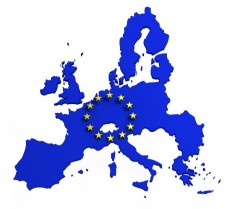The position on here is to advocate a “no” vote in the forthcoming referendum on 31st May.
Imagine this fairytale scenario: July 2012, Spain’s 10-year borrowing costs rise from 6.2% today to 7.1%, the same as Ireland’s 10-year bond at the start of November 2010 on the eve of our first bailout.Spain decides that this is an unsustainable interest rate, especially when the Europe’s new emergency fund, the European Stability Mechanism is supposed to be a cheap source of official funding. At the same time, Spain’s audit of its bank loans which it has just announced shows that its banks need €200bn to cover losses on a decade-long binge of lending for property development, lending that rivalled Ireland’s.
So Spain decides to seek a bailout. How much will it need to cover its banks, it maturing debt and its deficit? Probably north of €300bn. The IMF will probably loan Spain a maximum of €50bn on the basis that the EU puts in the rest and gives the IMF precedence in the queue to recover funds if Spain defaults.
So where will the EU get €250bn-plus? Although the old fund, the EFSF will still be available, Minister Noonan recently said “the Eurogroup’s statement of 30 March 2012, provides that the ESM will be the main instrument to finance new programmes as from July 2012. Its lending capacity will be €500 billion. The EFSF will, as a rule, only remain active in financing programmes that have started before that date” So Spain would get a bailout from the ESM of €250bn.
And where do you think that money would come from?
The hope is that the ESM can borrow on the bond markets in return for guarantees from the countries that contribute to the ESM. In addition to guarantees, ESM countries like Ireland will have to contribute an overall total of €80bn to an initial pool of cash – Ireland’s contribution will be €1.27bn – which will assuage the fears of lenders who we hope will lend to the ESM fund at the same rate they charge Germany. We’re hoping that lenders will provide the ESM with up to €500bn of cash loans.
If all goes to plan, in the above scenario the ESM will raise €250bn from lenders and will in turn lend the €250bn to Spain. The ESM will charge Spain an interest rate which covers its costs – what the ESM has to pay ITS lenders and the ESM’s operating costs – and “an appropriate margin”. All fine and dandy so far.
But again in our fairy tale, let’s imagine that Spain fails to get its deficit under control, that 24% unemployment overall and more than 50% youth employment finally stirs widespread social unrest, and let’s assume Spanish banks with their Seanie Fitzcaraldos have underestimated their losses which turn out to be akin to the level of losses in Irish banks but proportional to the size of the Spanish economy of €1tn. In short let’s assume Spain defaults on its loans. Okay it might repay the IMF which assumes the lead position in the queue but if the losses in Spanish banks are akin to ours and couple that with an uncompetitive Spanish economy that is far from “small and open”, and a default may not be such a fairytale – remember the Greek fairytale? So the ESM ends up with a €250bn loss. Who makes that good?
That would be the ESM members and in Ireland’s case, we would have to stump up 1.6% of the loss or €4bn. So Ireland would have to hand over more than any of the painful incremental annual budget adjustments and that money would be gone, and gone forever.
Imagine this no-doubt fairytale scenario (and no, this is not a duplicate): September 2012, Italy’s 10-year borrowing costs rise from 5.8% today to 7.1%, the same as Ireland’s 10-year bond at the start of November 2010 on the eve of our first bailout.Italy decides that this is an unsustainable interest rate, especially when the ESM is supposed to be a cheap source of official funding. So Italy decides to seek a bailout.Italy has a massive mountain of debt to refinance and is also running a small deficit. Italy decides to ask for €400bn. Now where do you think this is coming from?
The advantage of the ESM for Ireland is that we should be able to access funding at the same interest rate that Germany pays for its loans. And when Germany is paying 1% and Ireland must today pay 7%-plus on the traditional bond markets, you can see the attraction of teaming up in a fund which gives us cheap loans. But remember, this is a fund that is not exclusively ours, and indeed it is being designed so that Spain or Italy– probably not both – can borrow from it. Ireland will have next to no say in the running of the ESM, the ESM and its staff are immune from legal action. Our potential exposure to lending to Spain and Italy would be €10bn-plus, and once we ratify the ESM Treaty that’s it, national parliaments can no longer decide to opt out or refuse a contribution.
So let’s not pretend the ESM is some fairytale creature that gives and gives. We hope to benefit from it or at least have it should we get into difficulties after the end of 2014, but we fund it and it is designed to fund larger EuroZone countries which may default and which may cost this country billions, and we will have very little say in its operation.



